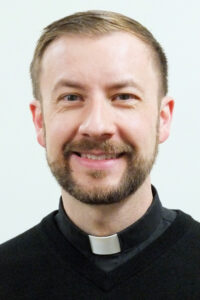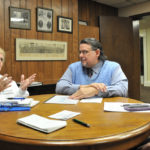By Fr. Thom Hennen
Question Box
Q: Prior to the Second Vatican Council, seminaries across our nation could hardly handle the large number of candidates studying for the priesthood. How can we once again fill our seminaries?

A. When I was serving as the vocation director for the Diocese of Davenport, I would get some version of this question on a regular basis. It is an interesting and layered question. It implies that we were doing something right then that we are not doing now, which may be true, but I don’t think that is the whole answer. Also, it implies that if we could just “go back” everything would be fine.
We tend to be selective in our memories, glorifying the “good old days,” and conveniently forgetting the negative things. In the end, there really is no “going back.” We are called to respond to the needs and circumstances of our own time, within the world and culture as it is, not as we would wish it to be. That is not to say that over time we cannot do things to influence the culture, especially within the Church as regards vocations, but I think it will be more of a marathon than a sprint.
It is largely true that seminaries were fuller prior to and even in the years immediately following Vatican II. Anecdotally, however, I know that large numbers of those who went to seminary in those years did not go on to ordination. There is nothing wrong with that. I think this was a reflection of a more “vocation positive” culture in which Catholic young men felt that exploring priesthood and even going to seminary for a year or two was a normal thing to do. Inevitably, though, with fuller seminaries more were ordained.
At the same time, we cannot forget that the admission and formation process then was not what it is now, especially following the implementation of Pope St. John Paul II’s Apostolic Exhortation on priestly formation, Pastores Dabo Vobis (1992). While we may have had more priests in decades prior to these reforms, we also did not always have those shining examples of priesthood that would have inspired future generations of vocations. Some did untold harm. Don’t get me wrong, many fantastic, faithful and holy priests were ordained when the seminaries were full. I just want to be clear that not everything was perfect just because the seminaries were full.
Another aspect of this is purely demographic. The fact is we are seeing Catholic parishes having to close and consolidate not simply for lack of priests but for lack of people. Even public schools in many areas have had to close or consolidate. The world of higher education has been preparing for the great “enrollment cliff” of 2025, in which post-secondary enrollment is expected to decline sharply based solely on the number of high school seniors. Yes, seminaries were more full in the decades prior to the Council, but so were households. Family sizes have dramatically decreased and so there is a lot at play here.
As to what we can do to reverse the trend, there may be some valuable lessons from the past that we can learn from; however, I don’t personally believe there will be any easy or quick fixes. The best thing I think we can do is to strive for vibrant parish life. This is the work of both clergy and laity. It is also important that we neither put our priests up on pedestals nor treat them like paper towels but provide them the support they need to fulfill their calling joyfully and effectively.
(Father Thom Hennen serves as the pastor of Sacred Heart Cathedral in Davenport. Send questions to messenger@davenportdiocese.org)











